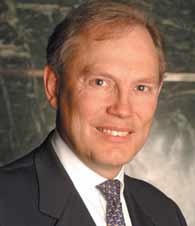|
Executive Interviews: Interview with Richard Rawlinson on Marketing in a Downturn
July 2009
-
By Dr. Nagendra V Chowdary
You have observed (in “Consumer
Products: Some Brands Win”, s+b)
that “consumer anxiety had been
building throughout 2008, but only
in the autumn did this anxiety show
up in day-to-day buying habits.” Booz
& Company also conducted an indepth
survey of 1000 households in
September 2008 in the US. Can you
give us a few insights from this
research as regards consumer
confidence and what lessons do you
think that research has for the
companies?
At that stage of the recession
consumers had already cut back on a
set of high expenditure, less
structured areas—staying at home
more, shopping frugally, and driving
less—even though they value many
of these activities highly.Deferring the
purchase of durables had just begun
at that stage and was most
pronounced in automobiles—more
than 20% of US consumers had
deferred automobile purchases,
while some 15% traded down to
cheaper or more fuel-efficient
vehicles. Consumers planned to
make incremental saving decisions in
the areas where they had already cut
back and in addition were beginning
to reduce expenditures on personal
durables (clothing), indulgences
(coffee chains, alcohol), household
durables (electronics) and services
(salon treatments, house cleaning).
Nearly half the respondents expected
their savings to decline and their
debts to increase. In the UK, which
was one of a number of countries
where we conducted similar survey,
a striking trend was the change in
shopping habits, favoring discount
stores instead of the UK’s
predominantly high quality, relatively
high price supermarket shopping
environment. The UK consumers
were worried about falling income,
the risk of unemployment and
declining asset values... but even
more by the price rises they saw the previous year in utilities, food and
petrol... rises which in many cases
have been reversed this year as
inflation has plummeted in the face of
declining demand. For companies, the key lessons are to
- Keep very current with their
consumers’ priorities, which in
economic uncertainty change very
quickly
- Reoptimize their brand, product
and SKU portfolio, working together
with their distributors and retailers
- Match the marketing mix to tighter
budget and to the retail channels that
consumers currently favor most
- Adjust costs and capacity to
survive a prolonged downturn.
-
Let’s look for a moment on
Interbrand’s top 10 brands of the
Global 100 Brands (for 2008) – Coca-
Cola, IBM, Microsoft, GE, Nokia,
Toyota, Intel, Microsoft, Disney and
Google. How should these brands
manage and build brand value?
By combining the long-established
fundamentals ofmarketing with some
of the new opportunities created by
changes in consumer and technology.
Brands like these were built by
consistent delivery of a distinctive
promise that consumers found
relevant to them . A brand is built by
stimulating and reinforcing the
consumer’s experience with the
product – marketing and advertising
is just a part of the totality that makes
up the consumer’s experience.
What’s changing in marketing is the
consumer’s move to electronic and
interactive media and the
development of more and smaller
segments of demand, that it is now
practical to service the customers
economically. Brands will continue to
be built by using new techniques of
segmentation and communication to
achieve objectives that have been the
bedrock of branding since branding
began./p> -
You have observed that,
“companies that have successfully
built up a distinctive combination of
brand value, customer loyalty and
savvy pricing can now use their
success as a launching pad for further
growth”. Can you give us a few
examples of organizations that have
executed this strategy successfully? In the UK, the Virgin brand is
probably the best-known example of
a distinctive brand positioning
successfully migrating from one
category to another. Starting in music
retailing, and then in airlines, the
Virgin brand was successfully
positioned as a challenger to
established incumbents, offering
youth, personality, a fresh approach
and better value – with a twist of
sexiness. Once established, that
formula has been applied to
everything from rail service to
wedding arrangements, with mobile
phones and soft drinks in between.
Some businesses have succeeded and
some have not, but the brand has
worked consistently across a wide
variety of categories.
|
